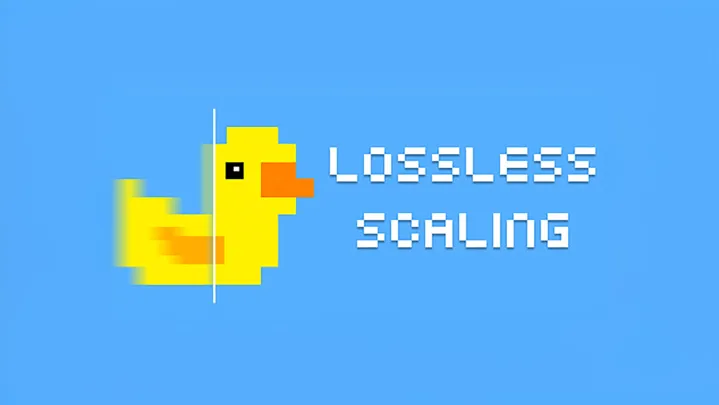Lossless Scaling is diving into insanity. It’s one of my favorite Steam apps, and something I’ve come to recommend to every PC gamer I know over the past few months. Now, the developer is pushing things further once again with a setting that can quadruple your frame rate. As if frame generation with any game wasn’t enough, and if tripling your frame rate didn’t sell you, now you can get a 4X increase in performance.
At least in theory. The developer announced the 4X update for Lossless Scaling last week, and it rolled out over the weekend. I downloaded it and played around in a few games. It works, and shockingly well considering how few rendered frames you’re actually seeing. But it definitely gets into absurd territory when it comes to image quality.
A refresher on Lossless Scaling

If you haven’t heard of Lossless Scaling, here’s a quick primer. It’s a $7 app on Steam that was originally built to add upscaling to any game. It existed for a few years without much recognition, but this year, the app received an update to add frame generation to any game. And, unlike frame generation mods you’ll find for DLSS 3 and FSR 3, Lossless Scaling works with any game, including those with anti-cheat software.
Since frame generation launched, the Lossless Scaling developer has been on a tear. The algorithm has seen several major updates, a 3X mode was added, and now we have 4X frame generation and even preliminary support for G-Sync monitors. It sounds too good to be true, but I’d take Lossless Scaling over AMD’s Fluid Motion Frames (AFMF) any day of the week — though AFMF 2 definitely gives Lossless Scaling a run for its money.
It’s been a fantastic tool to have around. I don’t use it in every game, and there are plenty of titles where I’d rather use DLSS 3 or FSR 3 if they’re available. But it’s been a huge help in some games. When Shadow of the Erdtree came out, I was able to have a much smoother experience without sacrificing online functionality. And in Destiny 2, which has a massive performance window depending on what you’re doing, I’m able to cap my frame rate and get a consistently smooth experience while playing. For $7, you couldn’t ask for much more, and that’s ignoring the upscaling that Lossless Scaling has to offer.
Diving into the absurd
I still wholeheartedly recommend Lossless Scaling. I don’t, however, recommend the new 4X frame generation mode. You can see why in the video below. I was only able to record at 720p to capture all of the frames, so apologies for the quality. Even with the low resolution, though, the problems are clear as day. It’s artifacts galore with the 4X frame generation mode, so much so that games look like some early AI-generated video if you’re not walking in a straight line.
To Lossless Scaling’s credit, 4X frame generation is insane. Like other fram- generation methods, Lossless Scaling is using frame interpolation. Your graphics card renders two frames, and then the frame generation algorithm steps in to see what changed between them. It then makes up the frames that would go in between.
With regular 2X frame generation, this is pretty simple. Not only is there less of a difference between the two frames the algorithm is comparing, you’re also only seeing the generated frame for a few milliseconds. With 4X frame generation, the algorithm has to make up three entirely new frames in between the two that were rendered, and the vast majority of what you see are generated frames. If you turn on 4X frame generation, 75% of the frames you see will be generated, not rendered.
Impressive in theory, not in practice

The fact that Lossless Scaling is even able to do 4X frame generation is remarkable when you consider what’s happening under the hood. It’s impressive more in theory than in practice, however. The fleeting artifacts that show up with 2X frame generation are now strung out for three times the length they normally would be. There are countless tiny artifacts when using Lossless Scaling that you’ll never notice in the heat of the moment while playing with 2X frame generation. With 4X frame generation, they become impossible to ignore.
Still, I can commend the developer for not only achieving 4X frame generation, but doing so smoothly. One of the hallmark aspects of Lossless Scaling is its consistency, which is on full display with the 4X frame generation. As usual, the developer recommends you have a frame rate cap at 60 frames per second (fps), and as long as you can consistently hit that mark, Lossless Scaling is remarkably smooth.
Although 4X frame generation is the headline feature of Lossless Scaling’s latest update, it comes with a few extra goodies as well. As mentioned, there’s now support for G-Sync monitors so you can use variable refresh rate, and the algorithm has been tweaked. The developer says the 3X frame generation mode handles dark scenes better with fewer artifacts, and there’s been some adjustment to the Performance mode available for frame generation to reduce artifacts. If you own Lossless Scaling, you can download the update for free on Steam now.




